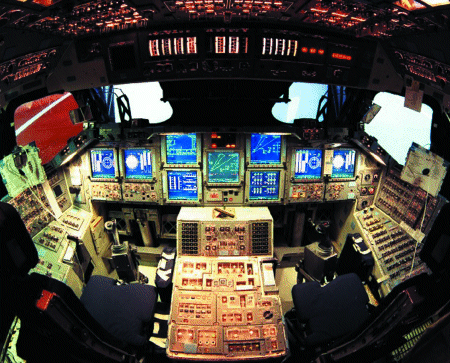
STS 101 Atlantis will be the first Space Shuttle orbiter to fly with the new Multifunction Display Subsystem (MEDS) developed by Honeywell Space Systems when its next mission is launched on 24 April. The new Boeing 777-style glass cockpit will also be added to the Columbia, Discovery and Endeavour orbiters.
The MEDS, comprising 11 full-colour flat-panel screens, will replace outdated electromechanical cockpit displays, including cathode ray tube screens, gauges and instruments. MEDS will give Shuttle crews easy access to vital information via the two-and three-dimensional colour graphic and video capabilities of its onboard information management system.
The new system has easy-to-read, graphic portrayals of key flight indicators such as attitude display and Mach speed, and reduces the high cost of maintaining obsolete systems.
Each display unit measures about 200mm (8in) square, weighs 8kg (18lb), uses 67w of electrical power and has a screen resolution of 172 dots per inch.
Four of the 11 full-colour liquid crystal Multifunction Display Units (MDU) will replace four monochrome units. Two MDUs each replace the commander (CDR) and pilot (PLT) flight instruments; one MDU replaces the on-orbit manoeuvring instruments at the aft flightdeck and the remaining two MDUs replace the CDR and PLT status displays.
The command and data entry keyboards, as well as the rotational and translational hand controllers, and most of the other cockpit switches, remain unchanged.
Source: Flight International























